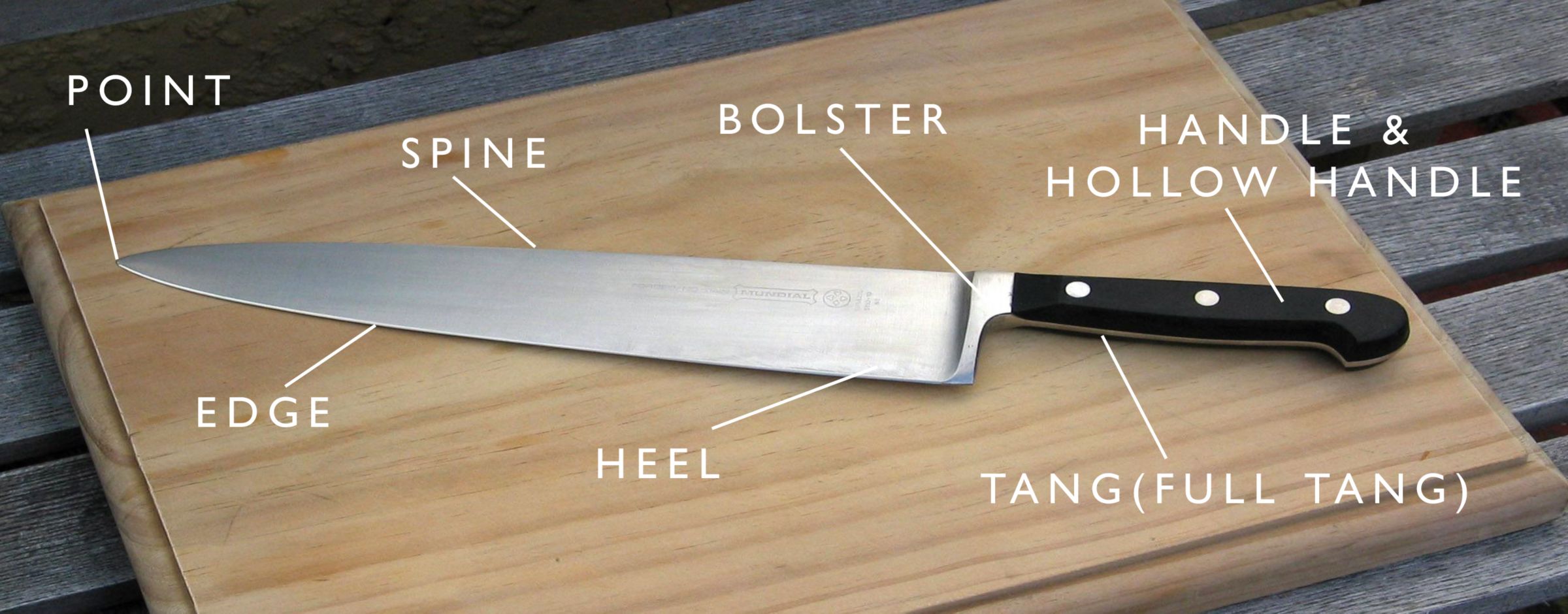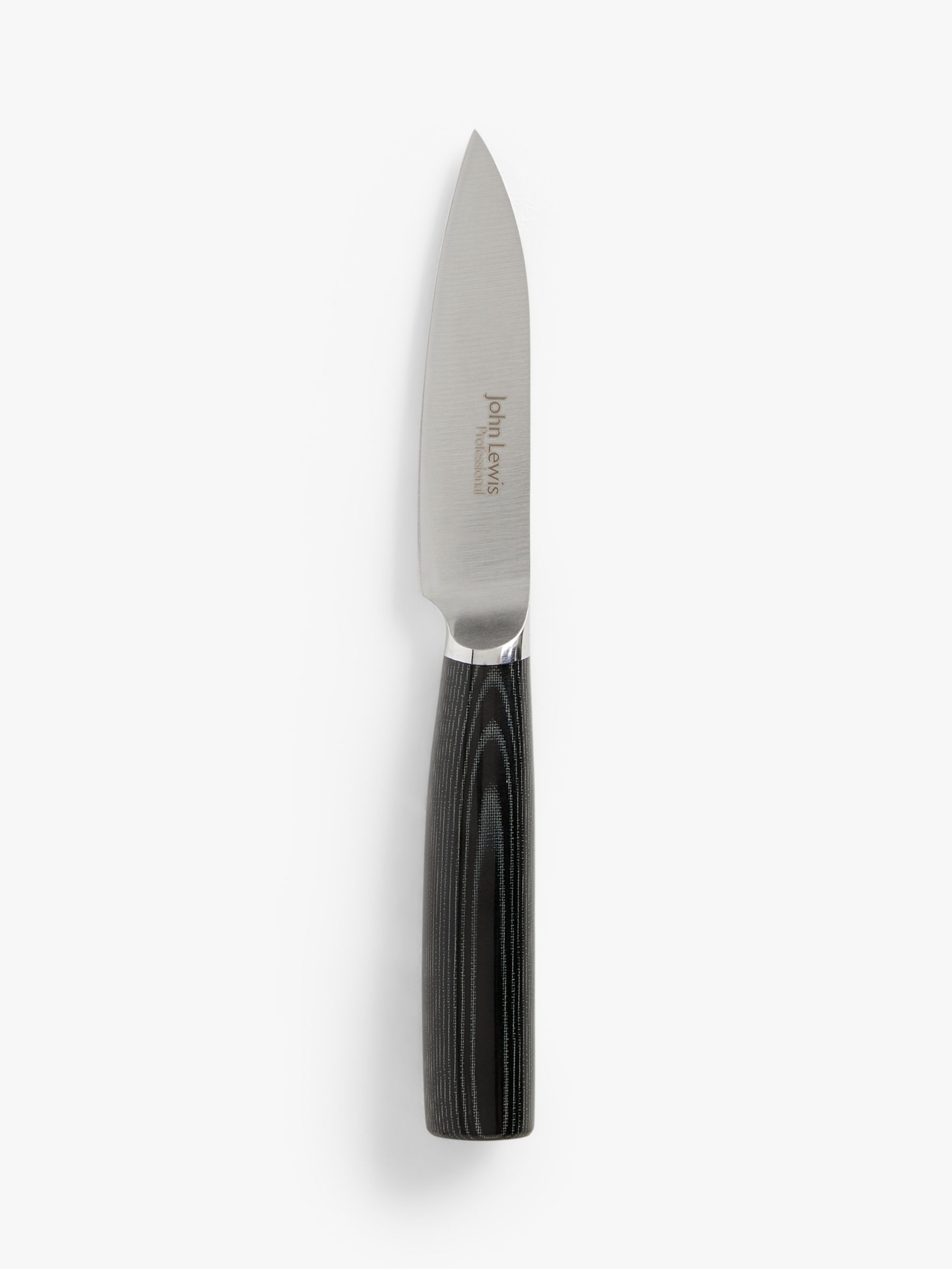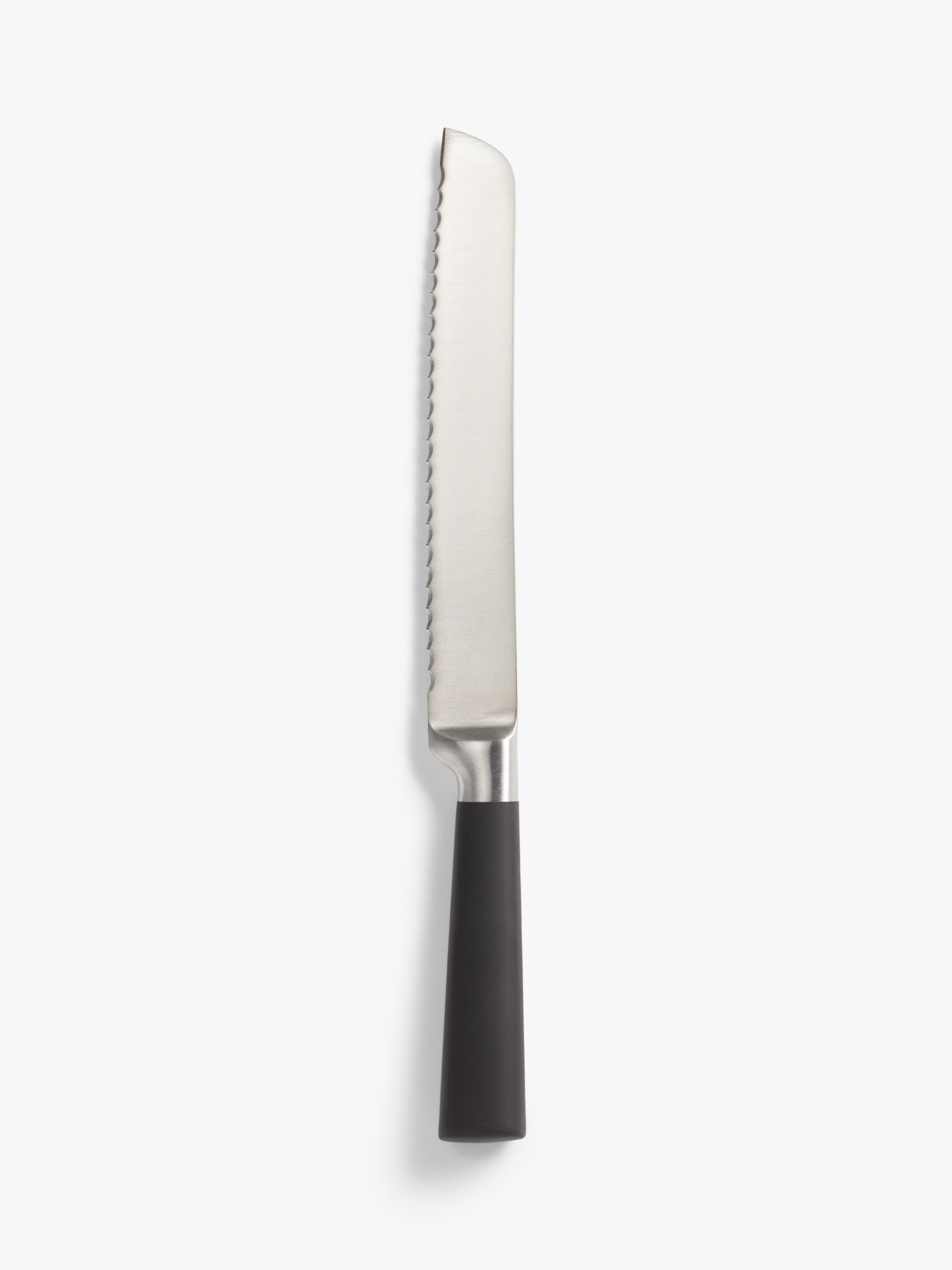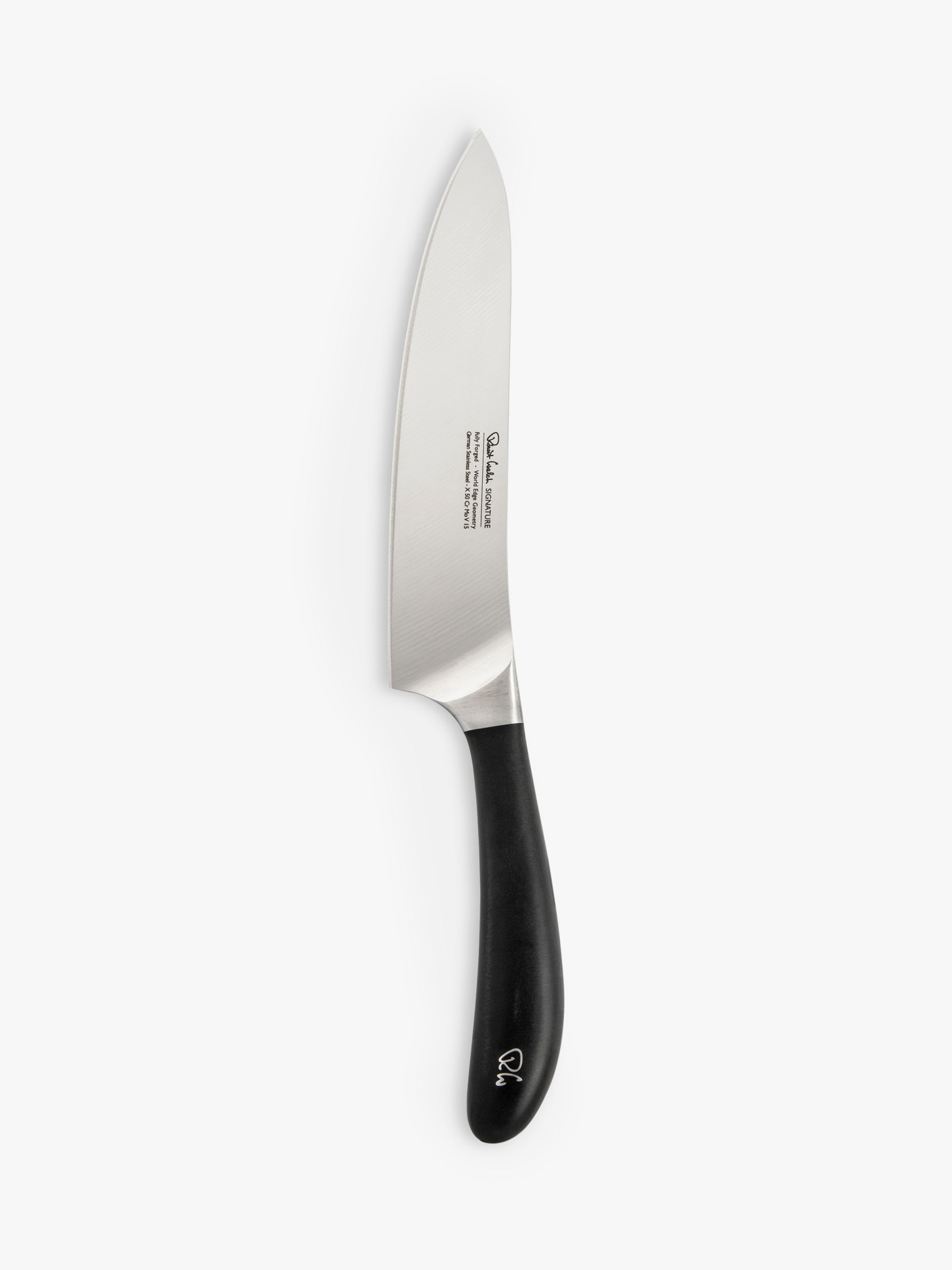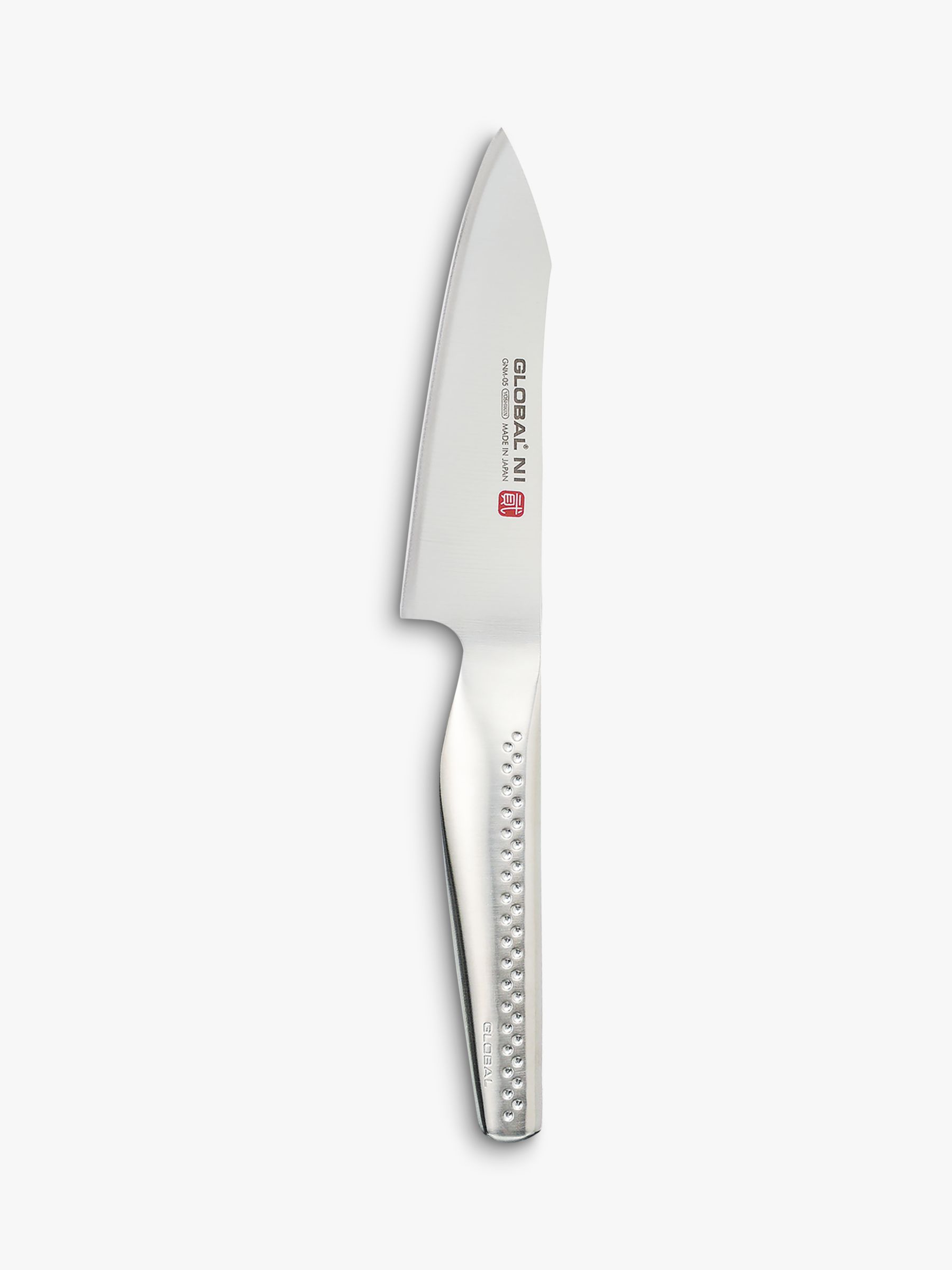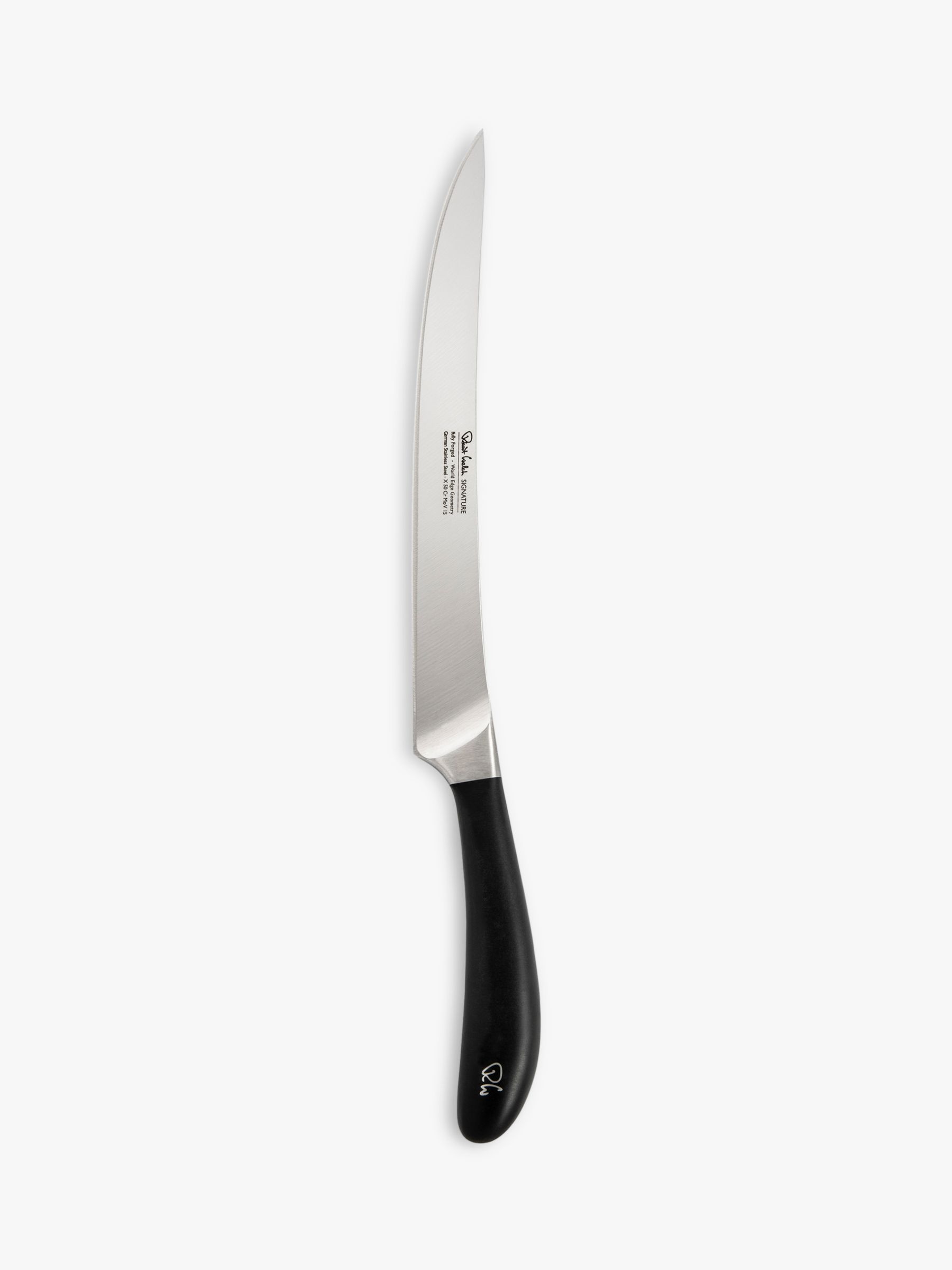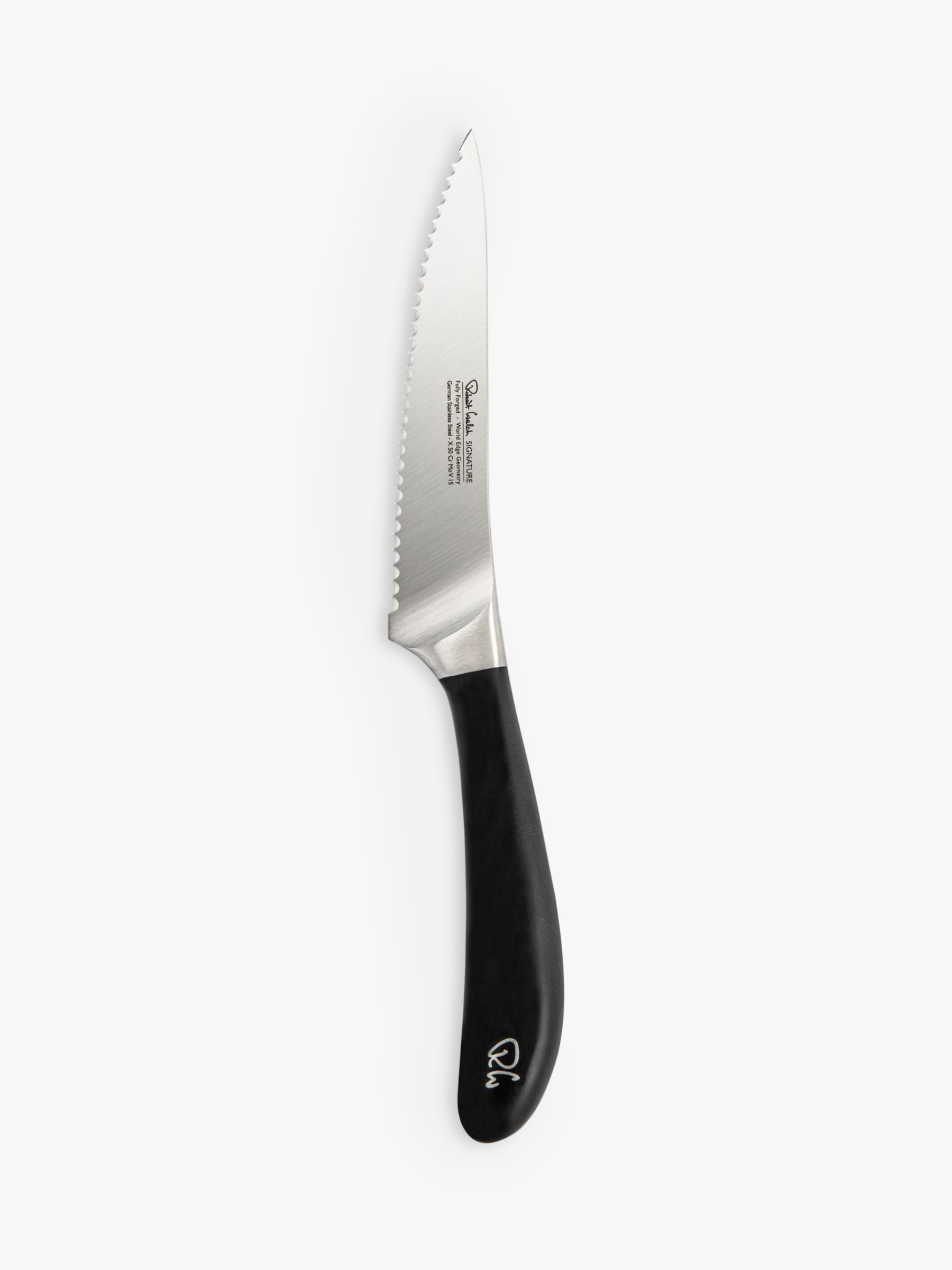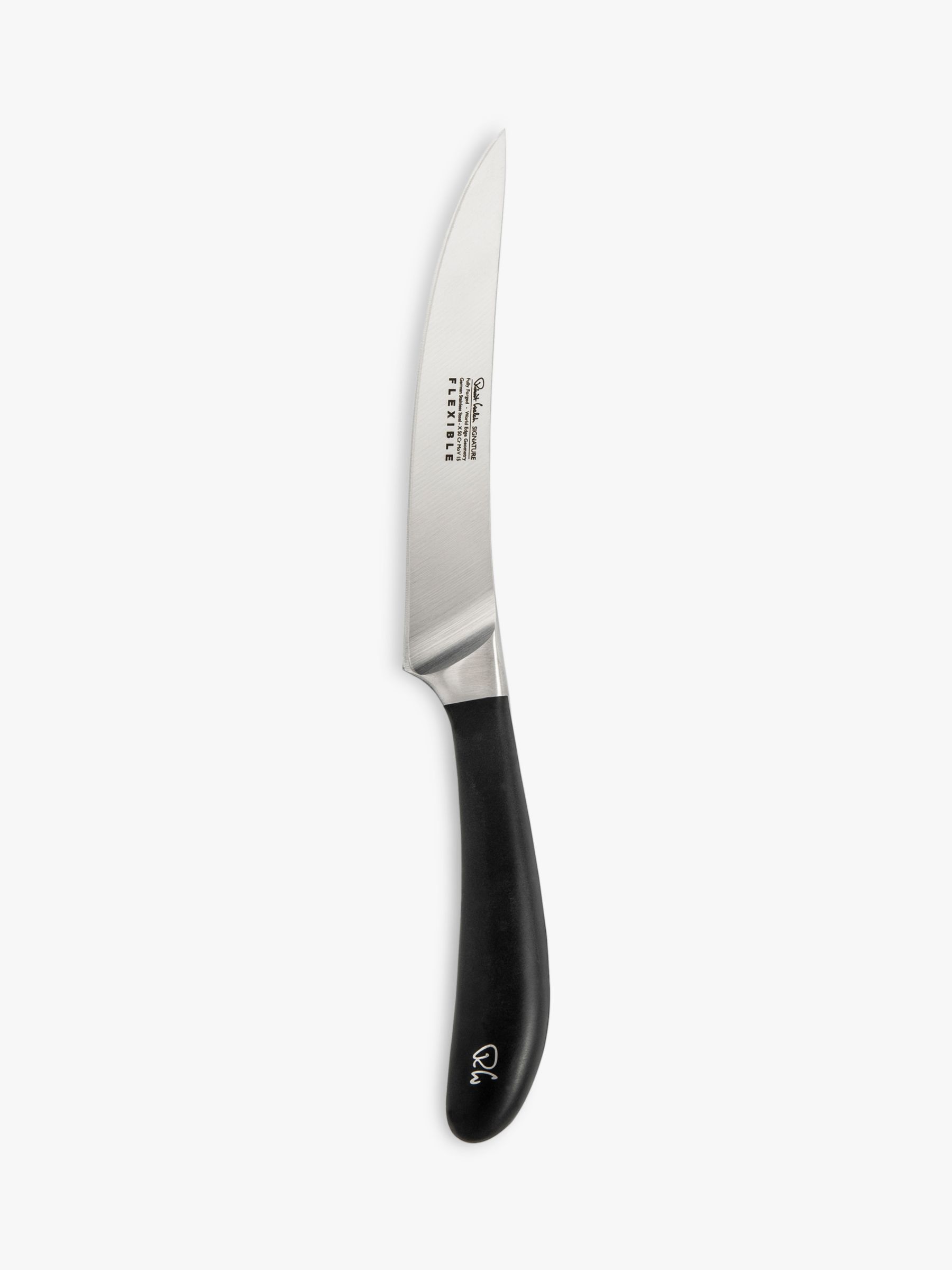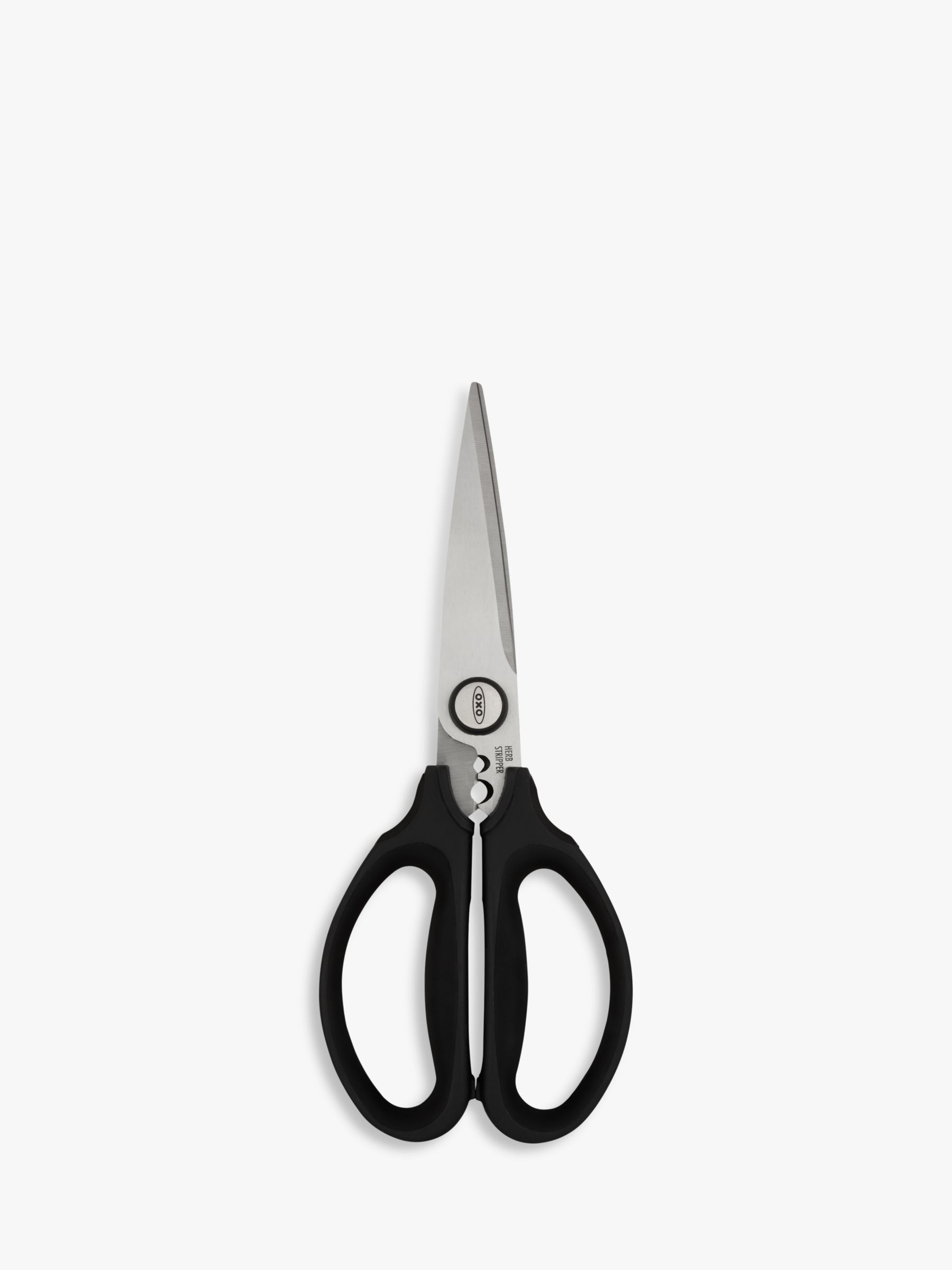Buying Kitchen Knives
Knives are shaped for particular jobs and a wide range is available - we feature the details of many online which you can then buy in our shops.
Depending on how frequently you cook, you can either keep to a few versatile knives that will cope with most tasks, or you can choose a selection of purpose-made ones. The measurement of a knife excludes the handle and refers to the length of the blade from heel to tip.
In support of the government's initiatives to prevent knife crime, these products aren't available for online purchase, so please visit our shops.
Buying the Best Knives for Your Kitchen at John Lewis & Partners
Whether you're looking for a new set of knives, or just want to cherry-pick a specific type of kitchen knife to fill a gap in your collection, John Lewis & Partners has a vast choice available.
Good-quality knives are essential tools and often a cook's most prized asset in the kitchen. This guide looks at the different types of knives, blades and materials available to help you make the right choice.
If you simply want to purchase a few basics for everyday use we recommend a paring knife, bread knife and carving knife. Bolster your collection for the kitchen with a chef or cook's knife, utility knife, boning knife and cleaver. Santoku knives are increasingly popular in the modern kitchen and we have a range of specialist knives for tackling tricky food, from tomatoes to shellfish.
Point
The sharp end of the blade tapers to a point. This tip is necessary for scoring and starting holes and should be protected for safety and to avoid damage
Spine
The spine is the top or back of the knife blade, opposite the knife edge. Usually, the thicker the spine, the stronger the blade. The spine affects the balance of the knife and ease of use. Thicker, heavier spines are great for chopping, but less so for delicate cutting. Notches on the spine near the handle, known as 'jimping', give added control for precision cutting
Bolster
The thick divider between blade and handle, which helps to provide balance to the knife and acts as a safety guard for the hand
Tang (full tang)
The tang is the extension of the blade, to which the knife handle is attached. On a ‘full tang’ knife, the tang runs the length and breadth of the handle, adding weight, strength and better balance. Full tangs are found on the best quality knives and can sometimes be thicker than the blade. A full tang is visible on the outer edges of a riveted-handle knife, but it can also be encased within a plastic handle. Mid-price range knives may have a ‘half tang’ where the tang is half the length of the handle. Lower price range knives may have a ‘nab tang’ or ‘whittle tang’ - even shorter than the half tang
Edge
Knives might have a plain edge without scallops or serrations. Plain edge knives require frequent sharpening to maintain the edge and are usually made of very hard stainless steel. Scalloped edge knives are used for cutting bread or foods which are hard or crusty on the outside
Heel
The right-angled end of the blade, where the blade meets the handle, sometimes part of the bolster. The heel can be used as part of the cutting edge, and on a cook’s knife needs to be deep enough to allow room for a thumb and fingers to hold the handle without knocking against the board when the knife is used with a rocking action in chopping
Handle & Hollow Handle 
Handles are available in a variety of materials. Plastic handles can be moulded in one piece to slot over the tang, or in two pieces riveted either side of the tang. Wooden handles require more care, and are unlikely to be dishwasher proof as they can split and crack. An alternative is wood/plastic composite, which requires little maintenance, is hygenic, and looks and feels like wood. Stainless steel handles are welded onto the tang and can feature indententations to improve the grip. The shape and weight of a knife’s handle affects its balance and ease of use
A hollow handle generally refers to a handle made of stainless steel in two halves, joined to the blade internally or externally. Hollow handles may be too light to balance the weight of the blade, so metal weights or sand can be added inside the handle to improve balance
Kitchen Knife Types
Paring / Peeling Knife & Utility Knife
Paring knives are small all-purpose knives with a sharp point. They're designed specifically for precision tasks, peeling veg, de-seeding, top and tailing, slicing through everything from onions to mushrooms. They make it easier and safer to do some of the more delicate cutting tasks that smaller foods occasionally require.
A utility knife is for general purpose, with a serrated edge. It is used to cut and trim meat and larger vegetables.
Bread Knife & Serrated Utility Knife
These have long, thin blades that are serrated on the end to make it easier to cut through bread. A good serrated knife will keep you from tearing up the bread as you cut it, and is often your best choice for softer fruits and vegetables such as tomatoes. A serrated utility knife is a general purpose knife, but the saw-like serrated edge makes it good for cutting foods with a hard outside and a soft inside, for example bread or tomatoes.
Cook's Knife / Chef's Knife
A chef's knife is a must-have, built to tackle hard vegetables, prepare meat, as well as finely chop herbs. The chef's knife comes in various sizes with a curved blade to create a rocking motion while chopping, just like a pro. The cook’s knife, or chef’s knife, is a large, versatile, all-purpose knife. The blade has a straight edge from heel to halfway along the blade, which then gradually tapers towards the point. The blade is broad and strong, and the user can chop, using a rocking motion, with one hand, while controlling the blade with the other. The deep heel allows plenty of space between the cook’s hand and the cutting board.
Santoku Knife
A general purpose kitchen knife that originated from Japan and has become more popular in recent years. The word santoku loosely translates as 'three uses', a reference to the three cutting jobs the santoku knife is designed to do: slicing, dicing and mincing. Indentations on both sides help reduce drag when cutting food that tends to stick.
Carving Knife
Used for carving and slicing meats and larger fruit. They are longer and thinner than a chef's knife for precision cutting of thin slices. Carving knives are available in a range of styles to suit different types of food. For joints of meat a reasonably rigid blade is needed, with a sharp point to work around bones. Poultry requires a more flexible blade, while cold meats require even more 'spring'. It is more economical to buy a carving set that comes with a matching fork. Carving forks can also be purchased separately.
Fileting Knife
This knife has an extremely thin, flexible blade so that when pressed against the backbone of a fish it will follow its curve and the flesh can be swept off cleanly. When the tip of the blade is pressed onto a hard surface, such as a chopping board, it should demonstrate a springy resistance.
Care & Maintenance
To keep your kitchen knives as good as new, clean them carefully, keep them sharpened and safely stored.
Discolouration
While stainless steel knives are highly resistant to discolouration, it may occur if the knife has been exposed to a naked flame or other heat source. Also, some detergents may produce a bluish film, although this can usually be removed.
More seriously, brown or black discolouration can signify the early stages of rust or corrosion, which usually indicates a lack of care in keeping the blade clean and dry and is attributable to prolonged exposure to acidic foods, salts or detergents, or steam from a dishwasher which can induce rusting and corrosion. At an early stage, this can usually be rectified by washing or scrubbing with a mild abrasive.
Alternatively, there are various proprietary stainless steel cleaners available. If left to persist, discolouration can result in pitting and cracking of the stainless steel.
Washing and cleaning knives
Knives should be washed by hand using a mild detergent and water. After washing, rinse with water and dry thoroughly with a towel.
Individual manufacturers should state whether a particular range of knives is dishwasher-safe or not. Instructions to avoid dishwashers could mean that the handles are not dishwasher safe, but many manufacturers also advise that knife blades are susceptible to corrosion if exposed for too long to the damp, steamy atmosphere of a dishwasher, and may also be damaged by contact with other items in the dishwasher. Wooden handles in particular are unlikely to be dishwasher-safe, as they can warp and split.
Sharpening knives
A sharp knife is essential for easier and more efficient food preparation. A sharp blade is safer than a dull blade because you don't need to apply as much pressure to get consistent cutting results. If you're not confident with whetstones or honing steels for sharpening, try a worktop or hand-held sharpener.
Knife blocks and storage
Appropriate storage is important in the safety of keeping knives.
Knife blocks come in a variety of shapes and materials, and perform the job of keeping knives all in one place on the worktop, storing the blades safely and preventing damage to the knives themselves. They typically incorporate a number of slots to hold different sizes of knife. Some knife blocks are sold empty and some are sold filled with a selection of popular kitchen knives.
Magnetic racks are an alternative to a knife block. A magnetic rack uses a magnetic strip with which to hold the knives in place. It can be mounted on the wall or inside a kitchen cabinet for greater safety.
If you keep single knives in a kitchen drawer, make sure you cover each one with a knife sheath to protect the blade and prevent accidents.
Jargon buster
Fully forged - Fully forged knives are the best quality, made from a single block of steel
Hardening and tempering - The processes knives are put through to produce a hard, durable blade
Tang - The part of the blade which attaches the blade to the handle
Full tang - A tang which runs the full length of the handle to provide strength and balance, a feature serious cooks look for
Whittle tang - Whittle tang knives have a short point which extends into the handle and cannot be seen. They are only suitable for lightweight work
Stamped - Cut from a continuous strip of stainless steel, they’re not as durable as fully forged knives but offer good quality and value for money
Taper ground - Taper ground blades are the best quality. The whole blade is ground to produce a blade with a fine, sharp and very strong cutting edge
Hollow ground - Not as durable as taper ground blades. Only the bottom part of the blade is ground to form a cutting edge
Half tang - A tang which extends partway along the handle. Suitable for general tasks
John Lewis & Partners Classic
The John Lewis & Partners Classic range is our most popular high carbon stainless steel range, precision ground and hand made in Sheffield by Taylor Eye Witness Ltd. Our Classic knives have strong and durable handles secured by brass rivets and are hand-sharpened, with the stainless steel blades providing long-lasting sharpness. Every knife is test-cut for sharpness before it leaves the factory.

Knife Materials
Stainless steel knives - a practical material for kitchen knives, varying in quality. Stainless steel is more flexible and rust-resistant. It's easy to sharpen, durable and resists staining
Damascus steel - very strong, highly durable and sharp. This premium material is valued for its centuries-old crafting process resulting in a wavy pattern on the blade
Carbon steel knives - a simple steel blend with carbon. Blades stay sharp for a long time but are prone to rust and require careful cleaning and maintenance
Ceramic knives - Razor-sharp, light and hard blades. They're rust-resistant but not stain-resistant or flexible like stainless steel. Need to be handled with care as they can crack if dropped
How to dispose of Kitchen Knives
Wrap the knife carefully with paper, bubble wrap, cardboard or styrofoam so that it is well covered. This is very important to prevent injury during disposal. Use tape to secure the wrapping in place to ensure the packaging doesn't fall apart. If possible, use a cork on the tip of the blade for extra safety. The pointed tip of the blade is especially dangerous and should be handled with care. Place the wrapped knives in a puncture-proof plastic or metal container. The lid should also be secured with tape. Avoid putting knives in a flimsy container that is easily punctured. Label the container clearly with ‘Caution: Sharp’. This warning is essential to protect people during refuse collection. Place the container into your refuse. It's best to place the container at the top of your black wheelie bin, to make the caution label easily visible.
Alternatively, consider recycling. Check with your local recycling centre or civic amenity site to see if they can recycle sharp items. Most waste disposal sites include a skip for scrap metal, where you can take blunt knives and sharp kitchen implements. Wrap your knives as described above, and deliver them to your local recycling centre.



